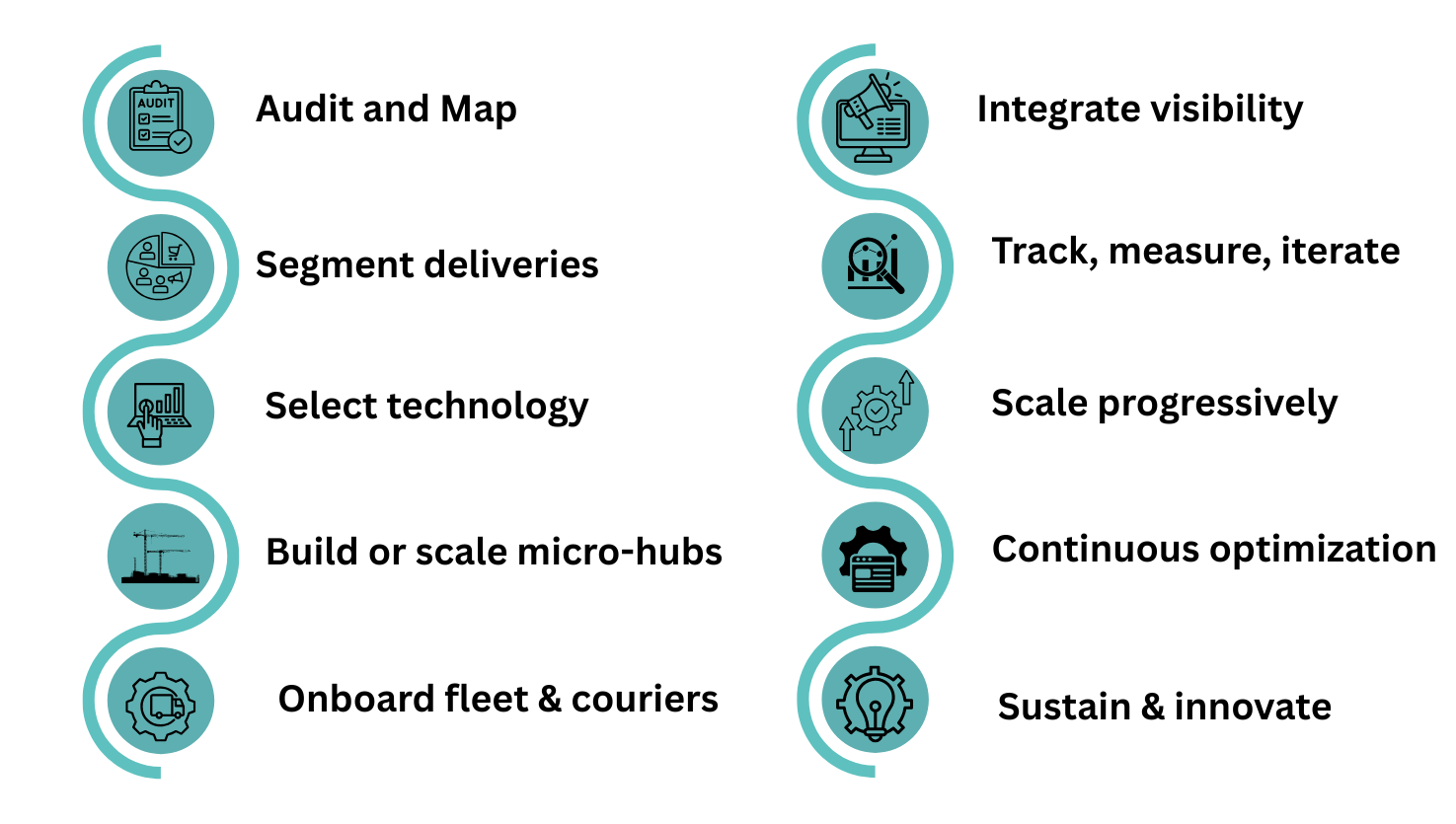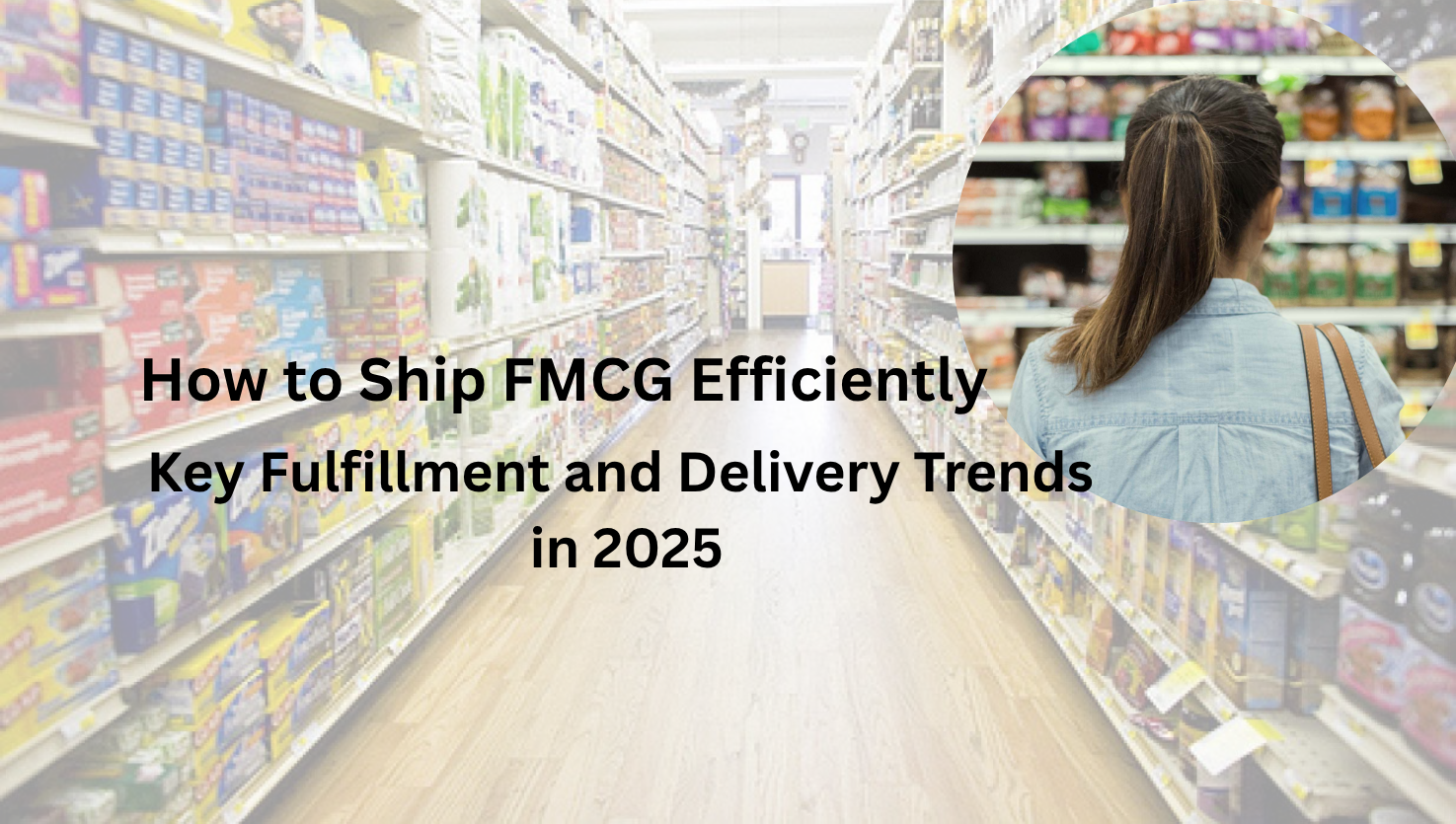The FMCG sector is truly the heartbeat of everyday life in India, from the breakfast cereal on your table to the toothpaste in your bathroom, millions of products are bought, used, and replaced constantly. Grocery adds another layer of urgency: fresh vegetables, dairy, staples, and packaged foods must reach homes and retail stores quickly, reliably, and in perfect condition. Every delay is more than just inconvenience, it affects freshness, availability, and ultimately, the trust customers place in a brand.
At the center of this intricate web is last-mile delivery, the unsung hero of the supply chain. This crucial final step moves goods from distribution hubs or local warehouses to the customer’s doorstep or the local kirana store. Though the distance may be short, the stakes are high: last-mile delivery is often the costliest and most complex part of the supply chain, sometimes accounting for more than 50% of total delivery costs. Optimizing it isn’t just about logistics; it’s about connecting brands with people’s lives, keeping promises, and building loyalty with every on-time delivery.
In this blog, you’ll discover how FMCG, grocery, retail, and pharma brands in India are overcoming last-mile challenges with smart strategies, technology, and innovative logistics. We’ll explore real-world use cases, share actionable tips, and highlight key metrics that drive efficiency and customer satisfaction. Along the way, you’ll see how data, micro-warehouses, AI-powered routing, and customer-focused solutions are transforming last-mile delivery from a cost center into a competitive advantage that builds trust, saves resources, and delights consumers
Understanding the Role of FMCG & Grocery Supply Chains in Last-Mile Delivery
In the bustling world of FMCG and grocery, every product tells a story, from the moment it leaves the factory to the instant it reaches a consumer’s hands. But behind the convenience of a stocked store shelf or a timely grocery delivery lies a complex web of supply chain operations, where last-mile delivery plays a critical role.
- High Volume, Low Margin
FMCG and grocery items are sold in massive quantities, yet each unit carries a small margin. This means logistics efficiency is not just important, it’s essential. Every delay or misstep in the last mile can chip away at profits, increase operational costs, and affect product availability. - Short Shelf Lives & Perishables
For grocery, especially perishables like fresh produce, dairy, and cold-chain goods, time is literally money. A delayed delivery doesn’t just inconvenience consumers, it leads to spoilage, waste, and lost trust. Optimizing last-mile delivery ensures freshness, maintains quality, and reduces wastage. - Inventory Flows & Replenishment Cycles
How quickly and accurately goods move through the supply chain directly impacts reorder frequencies, safety stock levels, and in-store availability. Brands that master the last mile can anticipate demand, plan replenishments effectively, and avoid stockouts, keeping both stores and customers satisfied. - Rising Customer Expectations
In the age of q-commerce and hyperlocal delivery, consumers expect fast, reliable, and trackable deliveries. Real-time tracking and predictable delivery windows are no longer perks, they are prerequisites for winning customer loyalty.
By seeing last-mile delivery not as a cost center but as a strategic lever, FMCG and grocery supply chains can become more resilient, scalable, and consumer-centric. Efficient last-mile operations not only reduce costs and waste but also create a competitive advantage, helping brands delight customers with every order.
Challenges in FMCG & Grocery Last-Mile Delivery
No discussion on last-mile delivery is complete without addressing the real-world challenges that FMCG and grocery brands face in India. Each obstacle is significant, but understanding them also opens doors for innovation and optimization.
- Urban Congestion & Traffic Delays
In India’s bustling metros like Bengaluru, Delhi, and Mumbai, road bottlenecks, tolls, and narrow lanes are everyday realities. These conditions slow down deliveries, increase operational stress, and often lead to missed delivery windows, frustrating customers and eroding brand trust. - Rural and Semi-Urban Accessibility
Reaching customers in rural or semi-urban areas presents a different set of hurdles. Poor road infrastructure, remote locations, and sparse addressing systems make last-mile delivery costly and unpredictable. Brands often struggle to maintain coverage while controlling expenses. - High Operational Costs
Fuel expenses, vehicle maintenance, labor, and reverse logistics collectively drive up operational costs. For FMCG and grocery companies operating on thin margins, these expenses can quickly erode profitability. - Unpredictable Demand and Order Patterns
Consumer demand is increasingly dynamic, last-minute orders, promotional spikes, and hyperlocal surges make route planning and fleet capacity management a constant challenge. Without smart planning, brands risk delayed deliveries and dissatisfied customers. - Coordination and Visibility Gaps
Many supply chains struggle with weak tracking systems, inaccurate addresses, and a lack of real-time status updates. These gaps lead to delays, unsuccessful deliveries, and increased operational friction. - Returns and Reverse Logistics
Handling returns, wrong item deliveries, and refund processing adds another layer of complexity. Effective reverse logistics is critical, yet difficult to execute efficiently, often adding significant cost and operational strain. - Regulatory, Infrastructure & Last-Mile Constraints
Local regulations, parking restrictions, limited micro-hub availability, and other infrastructural constraints further slow down delivery operations. These factors limit flexibility and make real-time execution more challenging for logistics teams.
Despite these challenges, every obstacle presents an opportunity for strategic improvement. By investing in technology, smart route planning, predictive demand analytics, and localized micro-hubs, FMCG and grocery brands can turn last-mile delivery from a cost burden into a competitive advantage, delighting customers while improving efficiency.
Fulfillment and Delivery Trends in FMCG & Grocery
The FMCG and grocery sector in India is transforming rapidly. Once considered the most complex and cost-intensive leg of the supply chain, last-mile delivery has now become a strategic growth driver. With urbanization, digital adoption, and the rise of on-demand shopping, brands are rethinking fulfillment models to deliver faster, smarter, and more sustainably.
The Rise of Quick Commerce
Ultra-fast delivery is reshaping consumer expectations. What began as an experiment is now a norm, with hyperlocal players promising delivery in just 10 to 60 minutes. To meet this demand, FMCG and grocery brands are investing in micro-fulfillment centers and dark stores across neighborhoods. These compact hubs bring inventory closer to consumers, cutting delivery distances, costs, and lead times.
Strategic Partnerships for Scalability
Instead of relying solely on owned fleets, brands are increasingly collaborating with third-party logistics providers, local courier partners, and gig networks. This flexible model allows them to scale seamlessly during peak seasons, reach tier-2 and tier-3 markets, and reduce infrastructure overheads, all while ensuring timely deliveries.
Technology-Led Optimization
Data and automation are at the heart of modern logistics. Brands are deploying AI-powered route optimization and real-time visibility tools to manage delivery operations dynamically. Routes adjust to traffic conditions, weather, or new orders in real-time, while customers enjoy live tracking, ETAs, and instant updates, improving transparency and satisfaction.
Smarter Scheduling and Hybrid Fleets
Grouping orders by locality, delivery window, and volume helps improve efficiency and predictability. Many brands now offer defined delivery slots, morning, afternoon, or evening, for better convenience. The adoption of hybrid fleets, including electric two-wheelers, bikes, and mini-vans, ensures flexibility and cost-effectiveness across diverse terrains and order types.
Predictive Demand & Inventory Planning
Forecasting tools now help brands anticipate consumer demand and pre-position inventory in the right hubs before orders even arrive. Stocking high-demand items closer to customers helps reduce lead times and maintain high service levels, especially during promotions or festive spikes.
Sustainability & Reverse Logistics Integration
Sustainability has become a priority for FMCG delivery operations. Brands are adopting green routing, using electric vehicles, minimizing fuel consumption, and reusing packaging to reduce waste. At the same time, reverse logistics, managing returns, damaged goods, and redistribution, is now integrated into delivery planning to maximize efficiency and minimize environmental impact.
Emerging Technologies & Consumer-Centric Delivery
Globally, innovations like drones, autonomous delivery bots, and smart lockers are redefining last-mile delivery. In India, the focus is on enhancing personalization and convenience, offering real-time rerouting, custom delivery slots, and predictive restocking to make every delivery experience smooth and reliable.
India’s FMCG and grocery fulfillment network is evolving toward a model that balances speed, intelligence, and sustainability. By combining microhubs, AI-driven routing, predictive analytics, and eco-friendly practices, brands can transform last-mile delivery into a true competitive edge. The future belongs to those who can deliver faster, not just in speed, but in strategy, adaptability, and customer experience.
Best Practices for FMCG & Grocery Brands
Here’s a step-by-step approach to execute last-mile optimization:

Audit current state & map delivery flows
Assess current average times, costs, delivery zones, failure points.
Segment deliveries & pilot zones
Choose a city or region to pilot micro-hub + optimized routing and measure impact.
Select technology & partner stack
Evaluate route optimization engines, delivery management platforms, tracking tools.
Build or scale micro-hubs / dark stores
Lease or repurpose small warehouses close to dense demand pockets.
Onboard fleet & couriers
Mix owned + contracted + gig couriers. Train them, equipped with mobile tools.
Integrate visibility & customer interface
Apps, SMS updates, proof of delivery, easy support for misdeliveries.
Track, measure, iterate
Use the KPIs above. Identify bottlenecks (failed deliveries, idle time) and fix.
Scale progressively
Expand to more zones, add automation, optimize reverse logistics.
Continuous optimization
Use AI feedback loops, periodic re-routing, demand before casting.
Sustain & innovate
Explore EVs, alternate delivery modes (bikes, micro electric vehicles), green routing and deeper last-mile innovations.
Adhering to this roadmap helps FMCG & grocery brands transition from manual to scalable, data-driven last-mile operations.
FMCG & Grocery Last-Mile Delivery as a Strategic Differentiator
In India’s fiercely competitive FMCG and grocery market, success is no longer defined just by product quality, pricing, or brand recognition. Today, the real differentiator is the delivery experience, particularly how efficiently and reliably brands manage last-mile delivery. Companies that get this right don’t just move products; they transform delivery into a strategic advantage. They reduce waste, keep shelves stocked, delight customers with timely service, and scale operations profitably.
By understanding the unique challenges of urban congestion, rural accessibility, and fluctuating demand, and by deploying smart strategies, measuring the right metrics, and implementing them thoughtfully, FMCG and grocery brands can build delivery networks that are agile, resilient, and highly efficient, networks that elevate the overall customer experience and make every delivery count.
In a Nutshell
In the world of FMCG and groceries, delivery is more than a step, it’s the promise you make to every customer. Each package that arrives fresh, each order that reaches on time, is a small moment of trust, care, and delight. When your last-mile delivery works effortlessly, it doesn’t just move goods, it moves hearts.
Let your deliveries tell the story your brand deserves. Discover how eShipz can turn every mile into a moment worth remembering.

